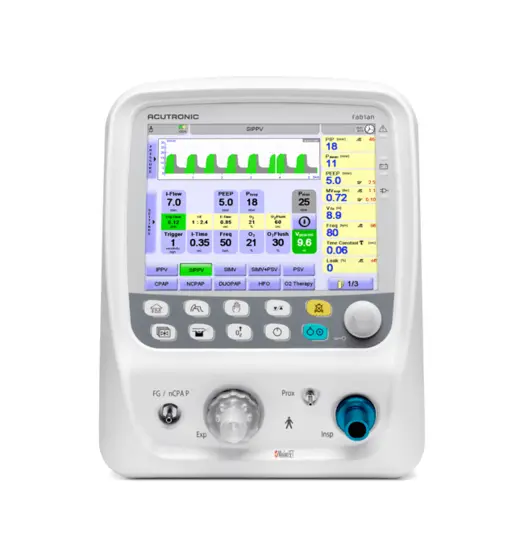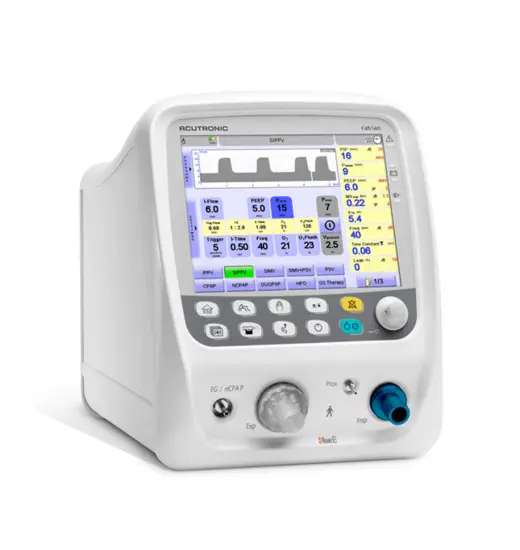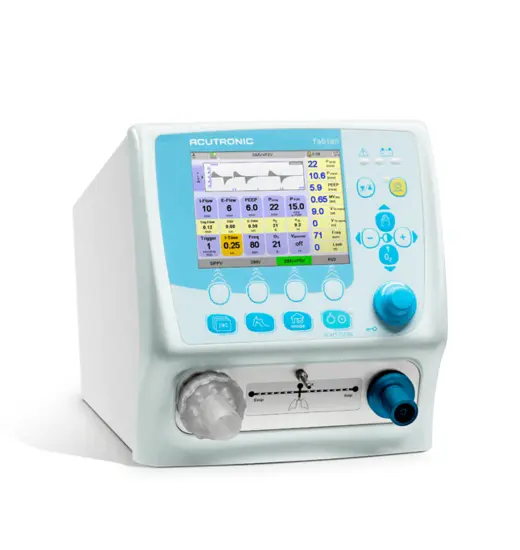fabian™ HFO Ventilator






fabian™ HFO Ventilator
The fabian™ HFO with a 10.4" touch screen is our most comprehensive ventilator. This model has a true single membrane high-frequency oscillation (HFO) with active inspiration and expiration in addition to all modern noninvaisve and conventional modes. Other enhancements include Forced Oscillation Technique (FOT), a precise and intelligent lung recruitment tool.* The fabian™ empowers the clinician to maintain the highest level of care as the infant’s condition and needs change.
*FOT may not be available in your region. Please inquire with your local Vyaire representative.
Please note, all products, services, or features of products and services may not be available in your local area. Please check with your local Vyaire representative. The information provided in this site is intended for healthcare professionals.
The fabian HFO doesn't require an additional tube set to connect the internal HFO module to the patient circuit, a solution that provides the following benefits:
- More power transmitted from HFO internal module to the patient;
- All modes (conventional and HFOV) can be used with the same patient circuit providing a seamless transition between modes;
- Reduced treatment costs; and
- More efficient time management for caregivers.
- Intuitive touch display
A clear, bright and lare touch – TFT display - visible at any angle and distance – with intuitive command reduces human error and puts the focus back on the baby.
- One-touch principal
All operation procedures are carried out by direct, time-saving and easy-to-understand "one-touch" principle.
- Color coding
See waveforms, numeric data, loops, ventilator status, etc., clearly displayed and represented, with color coded status zones.
Ultimately, innovations in ventilator design and clinical information management can improve both patient safety and outcomes, while supporting maximum flexibility.
- Comprehensive device
Allowing easy access to the baby at all times. No disturbances at the bedside in NICU/PICU from device reshuffles. - Lightweight unit
- Designed for safe, practical transportation with integrated electronic gas blender and built-in battery.
The challenge of optimal lung recruitment
FOT – Forced Oscillation Technique
The patented Forced Oscillation Technique (FOT) is a non-invasive, protective and easy method that allows the clinician to assess an optimally recruited lung at the bedside. Strategies for optimizing lung volume are critical – especially in preterm newborns. Usually, CPAP, PEEP and MAP are adjusted according to oxygenation, both in conventional modes and during High-Frequency Oscillatory Ventilation (HFOV). But oxygen saturation (SpO₂ or pO₂) may be an imperfect guide for MAP or PEEP titration: there remains a risk that PEEP-induced over-distension and intra-tidal recruitment/derecruitment go unnoticed.
An exclusive, patented option for the fabian:
FOT by setting the optimal CPAP, PEEP and MAP level for the individual patient, greatly reduces mechanical stress to the lungs, and brings down ventilation costs.
Direct feedback from the lung:
FOT allows the clinicians to assess the optimal mean airway pressure by measuring respiratory system reactance Xrs, and tailors protective HFOV or CMV ventilation support to the individual patient.



